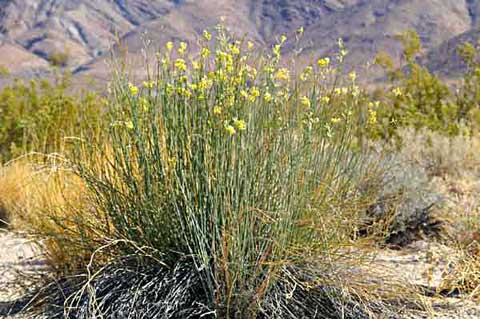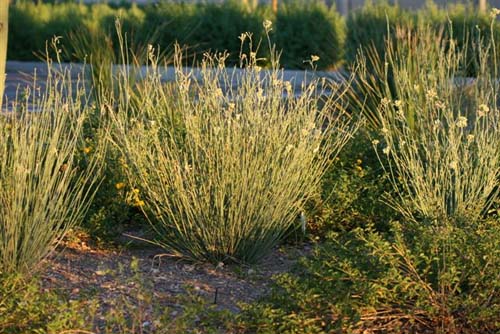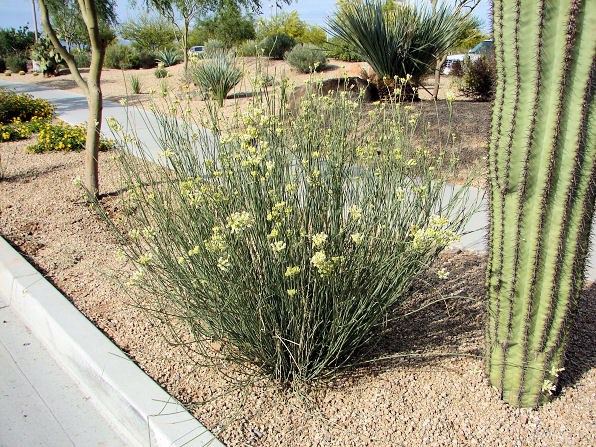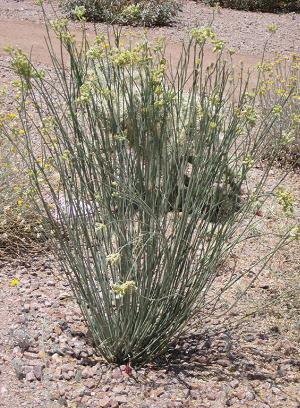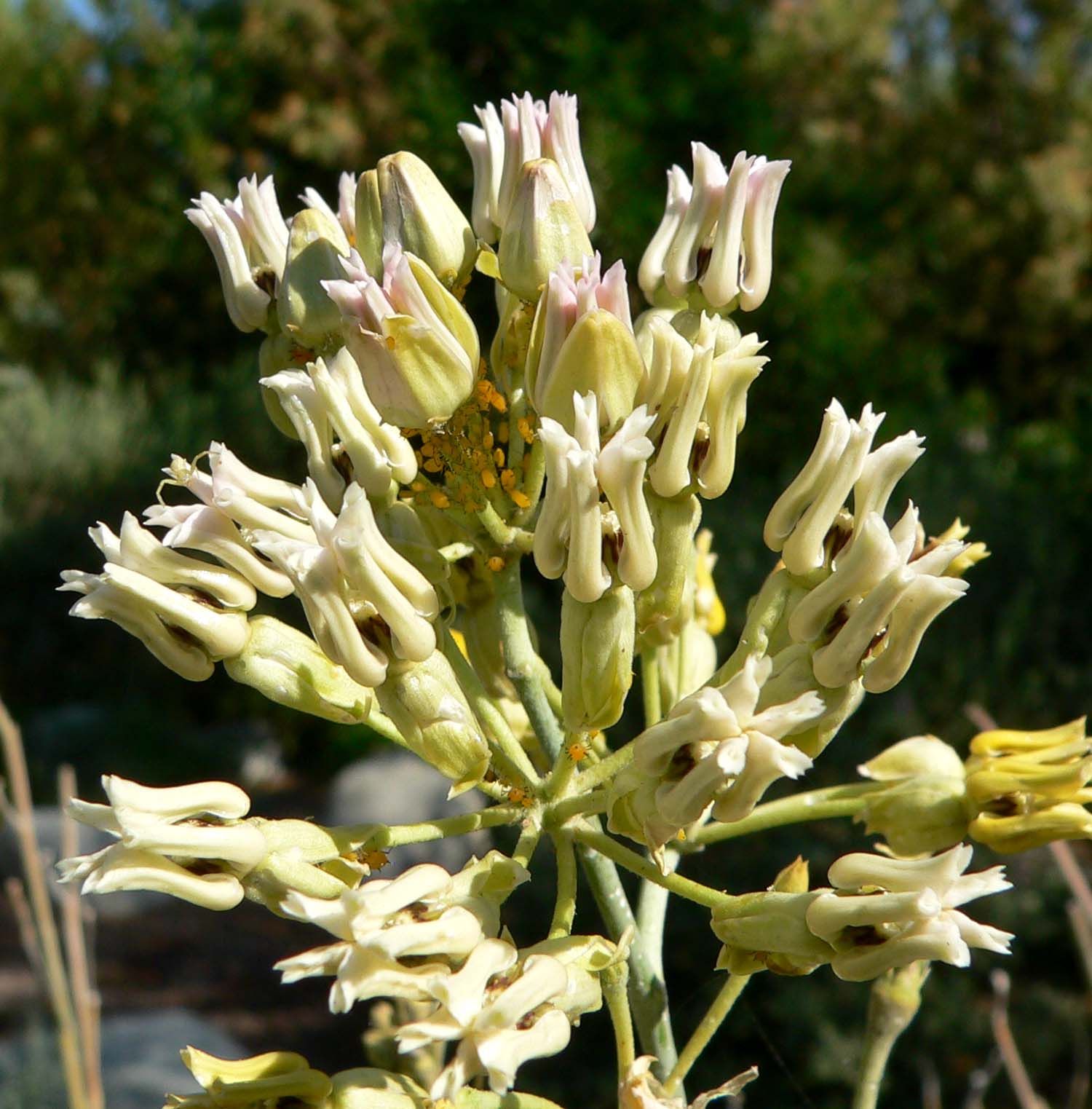Asclepias subulata
Asclepias subulata
Asclepias subulata is a species of the subfamily of milkweed plants ( Asclepiadoideae ). It is the only succulent species of the genus Asclepias.
Features
Vegetative characteristics
Asclepias subulata forms slender, somewhat fragile subshrubs that are succulent part and reach stature heights of 1 to 2 m. The blue- green, bald and smooth shoots have diameter of 3 to 5 mm. The branches are occupied only at long intervals and on the younger parts with opposite leaves. The linealischen, sessile, bare leaves are 2-8 cm long and 1-2 mm wide. They fall off very quickly and in the dry season, the time of flowering, the plant without leaves.
Inflorescence and flower
The inflorescence is formed in the region of the tips of the branches and consists of five to twelve flowers. It has a diameter of about 3 to 6 cm. The few inflorescences appear from about April to late autumn. The relatively short, stiff inflorescence stem measuring 1 to 2 cm and is usually hairy fine fluffy. The slender pedicels are 1 to 1.5 cm long and hairy also fine fluffy. The flower is relatively large. The sepals are lanceolate and 3 mm long. The corolla is yellowish white, the Kronblattzipfel ( about 9 to 11 mm long and lanceolate ) are completely repulsed. The Gynostegium is off-white and has a short stem. This is conical, measures 1 mm in length and 2.5 mm in width. The staminal, 9-10 mm long Nebenkronzipfel are folded bag shaped. The horn-shaped secondary projections are slightly shorter than the staminal Nebenkronzipfel, are completely surrounded by this and unable to be seen from outside. The stylus head has a conical shape, with a length of 3 to 3.5 mm and a width of 4 to 5 mm.
Fruit and seed
The spindle-shaped follicles are 8 to 10 cm long and have a diameter of about 1 cm. They are finely pubescent or glabrous. The oval, up to about 6 mm long seeds have a yellow-brown head of hair 3 to 4 cm in diameter.
Geographical distribution and habitat
This species occurs in the U.S. states of Arizona, California and Nevada, and is here called desert milkweed. In Mexico, the occurrence of Lower California ( Baja California) and the northwestern state of Sonora is limited.
You get there on dry, sandy or rocky soils at elevations of about 50 m to about 850 m before.
Ecology
The plant is poisonous in all its parts. She is in her area an important caterpillar food plant for the Monarch butterfly (Danaus plexippus) and the related butterfly Danaus gilippus strigosus.


